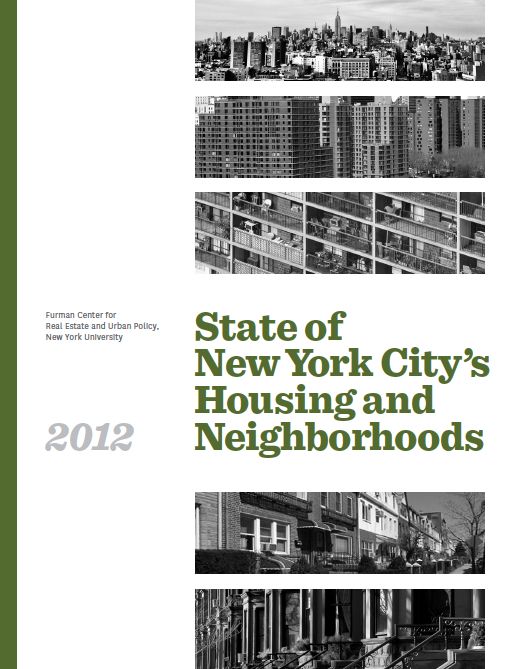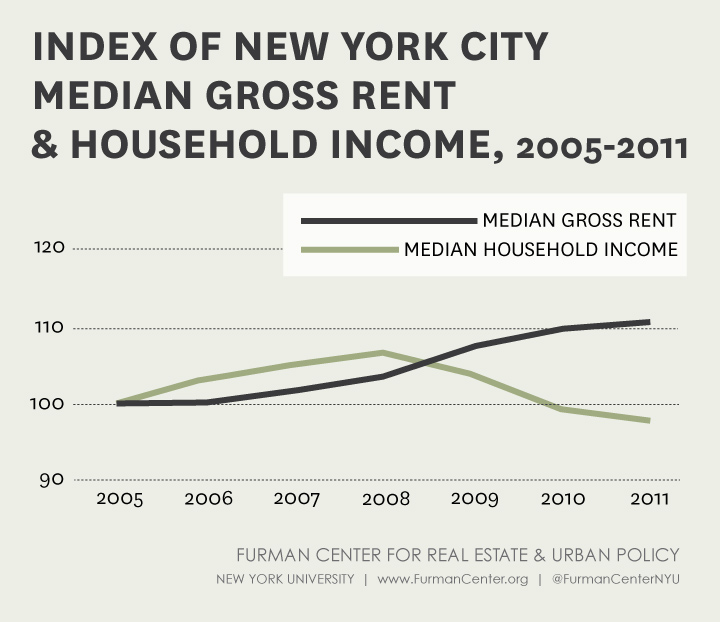
Report: State of New York City’s Housing and Neighborhoods 2012

In the six years since the recession, data paint a mixed picture of New York City’s recovery, according to the State of New York City’s Housing and Neighborhoods 2012, released this week by the Furman Center.
The city’s housing market showed signs of recovery—including sustained employment growth, rising home sales, and increased housing prices—but also showed increasing affordability challenges for New York City renters.
 Since the recession, stagnant incomes and rising rents have led to an increase in rent burdens. In 2011, 24 percent of New Yorkers were moderately rent burdened (spending 30 to 50 percent of their income on rent) and 31 percent of New Yorkers were severely rent burdened (spending 50 percent or more of their income on rent), according to the report.
Since the recession, stagnant incomes and rising rents have led to an increase in rent burdens. In 2011, 24 percent of New Yorkers were moderately rent burdened (spending 30 to 50 percent of their income on rent) and 31 percent of New Yorkers were severely rent burdened (spending 50 percent or more of their income on rent), according to the report.
Between 2007 and 2011, a period when house prices citywide fell by 20 percent, the median monthly gross rent citywide increased by 8.6 percent, from $1,096 to $1,191. During that same period, median household income decreased 6.8 percent, dropping from $54,127 to $50,433.
The report also details changes in city’s demographics in the past decade. Compared to 2000, the average New Yorker in 2011 was older, more likely to be foreign born, less likely to be married, less likely to be white or black, and more likely to hold a college degree.
The State of New York City’s Housing and Neighborhoods 2012 includes comprehensive data on housing, land use, demographics, and quality of life indicators for each borough and the city’s 59 community districts. The 2012 report also provides analysis on how New York City is performing in the aftermath of the housing crash and recession, as well data comparing New York City and the next four largest U.S. cities—Chicago, Houston, Los Angeles, and Philadelphia.
The State of New York City’s Housing and Neighborhoods has been released annually by New York University’s Furman Center for Real Estate and Urban Policy. Now in its 12th year, it continues to collect and analyze a wide range of data describing the city and its residents to serve as a resource for policymakers, researchers, and city residents.


